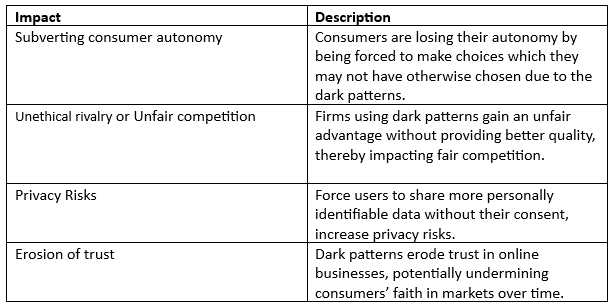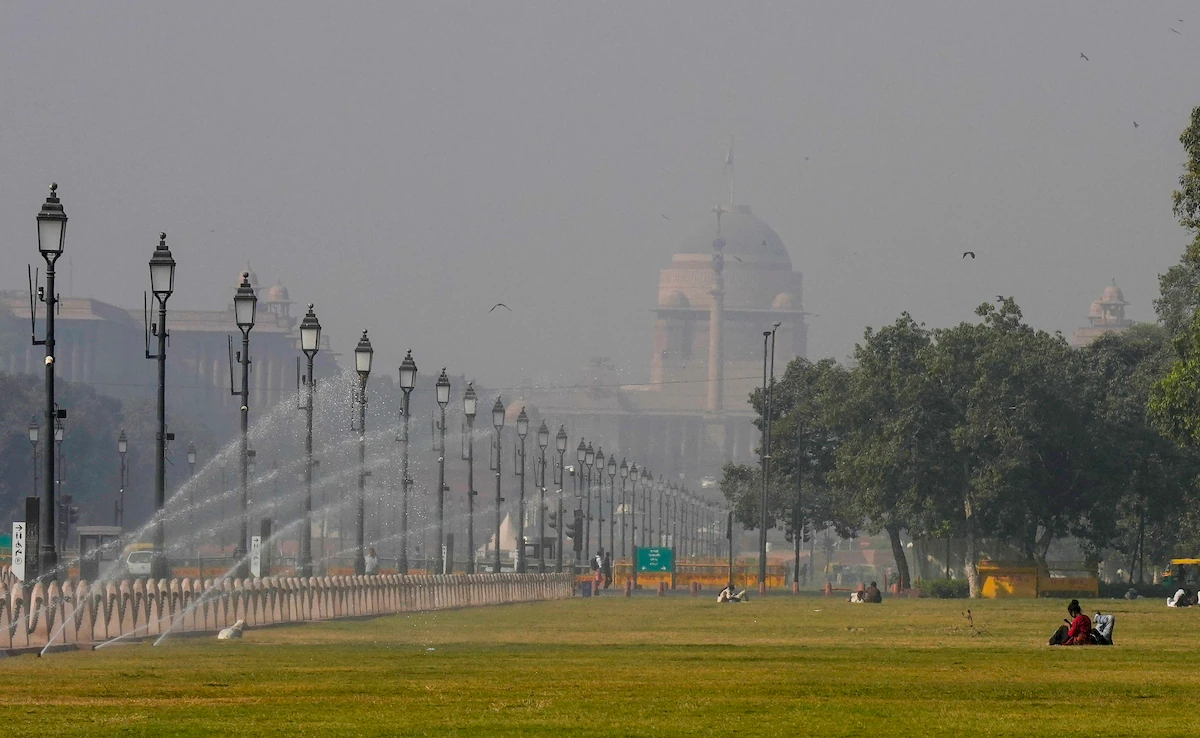- Courses
- GS Full Course 1 Year
- GS Full Course 2 Year
- GS Full Course 3 Year
- GS Full Course Till Selection
- Answer Alpha: Mains 2025 Mentorship
- MEP (Mains Enrichment Programme) Data, Facts
- Essay Target – 150+ Marks
- Online Program
- GS Recorded Course
- NCERT- First Ladder
- Polity
- Geography
- Economy
- Ancient, Medieval and Art & Culture AMAC
- Modern India, Post Independence & World History
- Environment
- Governance
- Science & Technology
- International Relations and Internal Security
- Disaster Management
- Ethics
- Current Affairs
- Indian Society and Social Issue
- CSAT
- 5 LAYERED ARJUNA Mentorship
- Public Administration Optional
- ABOUT US
- OUR TOPPERS
- TEST SERIES
- FREE STUDY MATERIAL
- VIDEOS
- CONTACT US
Dark Patterns
Dark Patterns
In News
- In September, 2023, Department of Consumer Affairs seeks public comments on draft guidelines for Prevention and Regulation of Dark Patterns.
- The public can comment on the guidelines, uploaded on the Union Consumer Affairs Ministry’s website till 5 October, 2023.
Dark Patterns?
- In July, 2010, the term ‘Dark Patterns’ was coined by a user experience (UX) designer, Harry Brignull.
- According to draft guidelines “any deceptive design patterns using user interface (UI) or user experience interactions on any platform, designed to mislead or trick users to do something they originally did not intend or want to do; by undermining the consumer autonomy, decision making or choice”.
- In other words, Dark Patterns misled people into doing something they originally didn’t want to do, such as paying for items or services they aren’t intend to buy.
- Such technologies are often designed to benefit the interests of a website or application owner at the expenses of their users’ experience and well being
The Impacts of dark patterns:

Types of dark patterns
Under the draft guidelines, following are the ten types of dark patterns used by e-Commerce companies have been identified by the Ministry of Consumer Affairs:
-
False Urgency
- To force consumers to buy or take action creates a sense of urgency or scarcity.
-
Basket sneaking
- Dark patterns are used to add additional products or services to the shopping cart without the user’s consent.
For example: while the user is buying a flight ticket, it will automatically add travel insurance.
-
Forced action
- Force users to sign up for the newsletter so that they can buy products.
-
Subscription trap
- Easy to sign up for a service but difficult to quit or cancel; option is hidden or requires multiple steps.
-
Interface interference
- This tactic makes some actions, such as cancellation or deletion of the subscription, hard for consumers to take.
-
Bait and switch
- Advertising some products and service but often offering others with lower quality.
-
Drip pricing
- A practice whereby-elements of prices are not revealed upfront or are revealed surreptitiously (secretly) within the user experience.
-
Disguised advertisement
- A practice of making advertisements appear to be other types of content such as user generated content, new articles or false advertising.
-
Nagging
- Users face an overload of requests, information, options, or interruptions; unrelated to the intended purchase of goods or services, which disrupts the intended transaction
For example: Websites repeatedly asks users for a download of their application.
Global Efforts to tackle Dark Patterns
- In 2022 the European Data Protection Board issued guidelines that provide practical guidance for designers and users of social media networks on detecting and avoiding dark patterns, which are unlawful under General Data Protection Regulation.
- In the U.S., the FTC (Federal Trade Commission) has taken note of dark patterns and the risks they pose.
- In 2022, the regulatory body listed over 30 dark patterns, many of which are considered standard practice across social media platforms and e-commerce sites.
- In 2021, California passed amendments to the Consumer Privacy Act, banning dark patterns that made it difficult for consumers to exercise legal rights, like opting out of the sale of their data.
Way Forward
To raise awareness about the dark patterns, and to allow users to recognize and prevent manipulative tactics used by websites and apps, is essential.
Ethical guidelines for designing, conducting audits and discouraging use of dark patterns should be adopted by online platforms on a voluntary basis.
Apart from this, Governments should create specific rules against deceptive design, and establish robust legal mechanisms to address dark patterns.
MCQ
Q. Which is NOT a type of dark pattern?
a. Bee Hive Motel
b. Disguised Ads
c. Privacy Zucking
d. Hidden Cost
Must Check: Best IAS Coaching In Delhi



